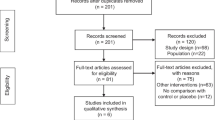Abstract
This study investigated whether body mass index (BMI) was associated with effectiveness of carpal tunnel release as measured by physical and self-assessment tests. This prospective, longitudinal study was conducted from March 2001 to March 2003 using 598 cases (hands) diagnosed with carpal tunnel syndrome and scheduled for surgery at The Curtis National Hand Center, Baltimore, Maryland, and at the Pulvertaft Hand Centre, Derby, England. Body mass index was calculated, and demographic, clinical, and functional data were collected preoperatively and at 6-month follow-up. Grip, pinch, and Semmes–Weinstein scores were measured preoperatively and at 6-month follow-up. Levine–Katz self-assessment scores for symptom severity and functional status were measured preoperatively and at 6-month follow-up. Grip and pinch increased, whereas Semmes–Weinstein, symptom severity, and functional scores decreased by 6-month follow-up. Cases with BMI >35 had lower grip strength and higher symptom severity in males and higher functional status in both sexes pre- and postoperatively compared to normal-weight BMI cases. BMI had no relationship to patient satisfaction. Although morbidly obese cases did worse on some physical and self-assessment tests compared to normal BMI cases preoperatively, all improved to the same extent postoperatively regardless of BMI.








Similar content being viewed by others
References
Amadio PC, Silverstein MD, Ilstrup DM, Schleck CD, Jensen LM. Outcome assessment for carpal tunnel surgery: the relative responsiveness of generic, arthritis-specific, disease-specific, and physical examination measures. J Hand Surg 1996;21A:338–46.
Atroshi I, Gummesson C, Johnsson R, Ornstein E, Ranstam J, Rosen I. Prevalence of carpal tunnel syndrome in a general population. JAMA 1999;282:153–8.
Becker J, Nora DB, Gomes I, Stringari FF, Seitensus R, Panosso JS, et al. An evaluation of gender, obesity, age and diabetes mellitus as risk factors for carpal tunnel syndrome. Clin Neurophysiol 2002;113:1429–34.
Bland JD, Rudolfer SM. Clinical surveillance of carpal tunnel syndrome in two areas of the United Kingdom, 1991–2001. J Neurol Neurosurg Psychiatry 2003;74:1674–9.
Guyette TM, Wilgis EFS. Timing of improvement after carpal tunnel release. J Surg Orthop Adv 2004;13:206–9.
Health Survey for England. Body mass index by sex, adults aged 16–64, 1986/87–2002, England. Available at http://www.heartstats.org. Accessed March 3, 2005. Health Survey for England 2005.
Karpitskaya Y, Novak CB, Mackinnon SE. Prevalence of smoking, obesity, diabetes mellitus, and thyroid disease in patients with carpal tunnel syndrome. Ann Plast Surg 2002;48:269–73.
Kouyoumdjian JA, Morita MD, Rocha PR, Miranda RC, Gouveia GM. Body mass index and carpal tunnel syndrome. Arq Neuropsiquiatr 2000;58:252–6.
Levine DW, Simmons BP, Koris MJ, Daltroy LH, Hohl GG, Fossel AH, et al. A self-administered questionnaire for the assessment of severity of symptoms and functional status in carpal tunnel syndrome. J Bone Joint Surg 1993;75A:1585–92.
Nathan PA, Istvan JA, Meadows KD. A longitudinal study of predictors of research-defined carpal tunnel syndrome in industrial workers: findings at 17 years. J Hand Surg 2005;30B:593–8.
National Center for Health Statistics. NHANES 1999–2002 data files. Available at http://www.cdc.gov/nchs/product/pubs/pubd/hestats/obese/obse99.htm. Accessed March 3, 2005. National Center for Health Statistics 2004.
Palmer DH, Hanrahan LP. Social and economic costs of carpal tunnel surgery. Instr Course Lect 1995;44:167–72.
Sungpet A, Suphachatwong C, Kawinwonggowit V. The relationship between body mass index and the number of sides of carpal tunnel syndrome. J Med Assoc Thai 1999;82:182–5.
Tanaka S, Wild DK, Cameron LL, Freund E. Association of occupational and non-occupational risk factors with the prevalence of self-reported carpal tunnel syndrome in a national survey of the working population. Am J Ind Med 1997;32:550–6.
U.S. Department of Health and Human Services. Diagnosis and treatment of worker-related musculoskeletal disorders of the upper extremity. Evid Rep Technol Assess (Summ) 2002;62:1–12.
Werner RA, Albers JW, Franzblau A, Armstrong TJ. The relationship between body mass index and the diagnosis of carpal tunnel syndrome. Muscle Nerve 1994;17:632–6.
World Health Organization. Diet, nutrition and the prevention of chronic diseases—report of a joint WHO/FAO expert consultation. World Health Organization 2003.
Acknowledgments
This study received research support from the Southern Derbyshire Acute Hospitals National Health Trust Matching Grant Research Scheme and the Derby Hand Surgery Trust Funds. The investigators thank the American Foundation for Surgery of the Hand, the Raymond M. Curtis Research Foundation, and the Medstar Research Institute for the financial support of this study.
Author information
Authors and Affiliations
Corresponding author
About this article
Cite this article
Bodavula, V.K.R., Burke, F.D., Dubin, N.H. et al. A Prospective, Longitudinal Outcome Study of Patients with Carpal Tunnel Surgery and the Relationship of Body Mass Index. HAND 2, 27–33 (2007). https://doi.org/10.1007/s11552-006-9019-x
Published:
Issue Date:
DOI: https://doi.org/10.1007/s11552-006-9019-x




